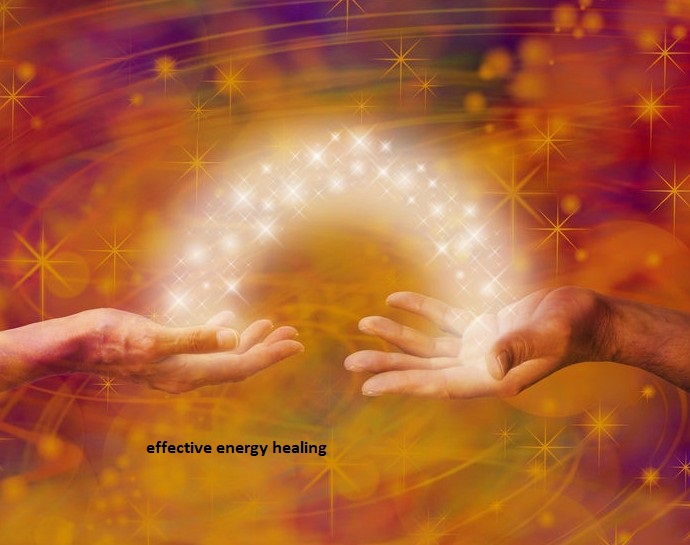Introduction
The search of holistic wellbeing has become more important in our quick-paced and frequently stressful life. Alternative methods of healing are becoming more and more popular because they may address both physical ills and the profound interconnection between the mind, body, and spirit. Reiki is one such technique that has captured the attention and hearts of people looking for harmony, relaxation, and general vigor. This extensive study will go deeply into the realm of Reiki, examining its foundational ideas, methods, advantages, and transformative potential for advancing efficient energy healing.
An Ancient Practice with Modern Relevance
Reiki, which is pronounced “ray-kee,” is a Japanese healing method that was developed in the first half of the 20th century. The technique was devised by its creator, Mikao Usui, on the grounds that he thought all living things were infused with unseen life force effective energy healing energy. Every living creature contains this life-giving force, also known as “ki” or “qi,” which is also known as the essence of life.

In order to enable healing and encourage balance within the recipient’s body, mind, and soul, Reiki is the practice of utilizing and directing this universal life effective energy healing force energy. Reiki’s fundamental tenet is that stress, sickness, and emotional imbalance are more likely to strike when effective energy healing a person’s life force energy is low. Alternatively if this energy.
The Reiki Experience A Journey of Healing and Renewal
A Reiki treatment effective energy healing combines physical, emotional, and spiritual elements to create a singular and wonderfully calming experience. The typical events that take place effective energy healing during a Reiki session are summarized as follows:
Setting the Stage
The patient reclines comfortably on a effective energy healing massage table or sits in a chair while remaining fully dressed.
A calm atmosphere can be produced with background music that is soft and relaxing.
The Reiki practitioner, who has received training in and attunement to Reiki energy, starts the session by grounding themselves and establishing a specific objective.
The Energy Flow
In order to apply pressure, the practitioner delicately places their hands on or just above certain parts of the recipient’s covered body.
The major organs and energy centers, or chakras, of the body are represented by these hand postures.
The practitioner serves as a conduit, allowing the recipient to receive the universal life force energy after passing through them.
It’s critical to remember that Reiki energy is intelligent; it targets imbalances and blockages in the recipient’s body where they are most needed.
effective energy healing Sensations and Experiences
During a Reiki treatment, the recipient frequently describes a variety of sensations, such as warmth, tingling, or a feeling of extreme relaxation.
Additionally, some people may undergo emotional releases that help them understand and deal with unsolved emotional problems.
Healing and Rejuvenation
The recipient is encouraged to heal themselves as the Reiki energy runs through them.
It can encourage the body’s innate healing mechanisms, assisting with physical discomfort relief, tension release on an emotional level, and balance restoration.
Completion and Integration
Depending on the needs and preferences of the recipient, the session usually lasts 45 to an hour.
The recipient is advised to consume water and practice gentle self-care after the session to aid in the energy’s assimilation.
Nourishing the Whole Being
Reiki has advantages for the person’s physical, emotional, and spiritual dimensions. Here are a few of Reiki’s main benefits:
Stress Reduction and Relaxation
One of the most immediate and noticeable effects of Reiki is deep relaxation. It helps alleviate stress and anxiety, promoting mental calmness and emotional balance.
Pain Management
Reiki can be effective in managing chronic pain conditions by addressing the underlying energetic imbalances contributing to discomfort.
Emotional Healing
Through Reiki, individuals can release emotional blockages and trauma, facilitating emotional healing and self-awareness.
Improved Sleep
Many people find that regular Reiki sessions improve their sleep patterns, alleviating insomnia and promoting restful sleep.
Enhanced Immune System
By boosting the immune system and the body’s inherent healing processes, reiki helps the body both prevent and treat ailments.

Spiritual Growth
Reiki can strengthen the bond between effective energy healing spiritual pilgrims and their inner selves as well as the global life force energy. It promotes inner tranquility and a sense of purpose.
A Lifestyle of Healing and Growth
Reiki differs from many other healing treatments in that it continues after the session concludes. After receiving Reiki training, people are able to heal themselves and effective energy healing other people. This gives people the ability to adopt Reiki into their daily lives and turn it into a lifestyle that encourages balance and wellbeing.
Conclusion
Reiki is a powerful tool for healing on all levels and for re-establishing one’s connection to one’s inner essence in a world that is characterized by perpetual change and external influences. Reiki invites people to go on a transforming journey of self-discovery and inner harmony, whether they are looking for relief from medical afflictions, emotional healing, or spiritual progress. Every breath, every heartbeat, and every soul that wishes to thrive are reminded of the tremendous interconnectedness of mind, body, and spirit as Reiki flows through the practitioner’s hands and into the recipient’s existence.



